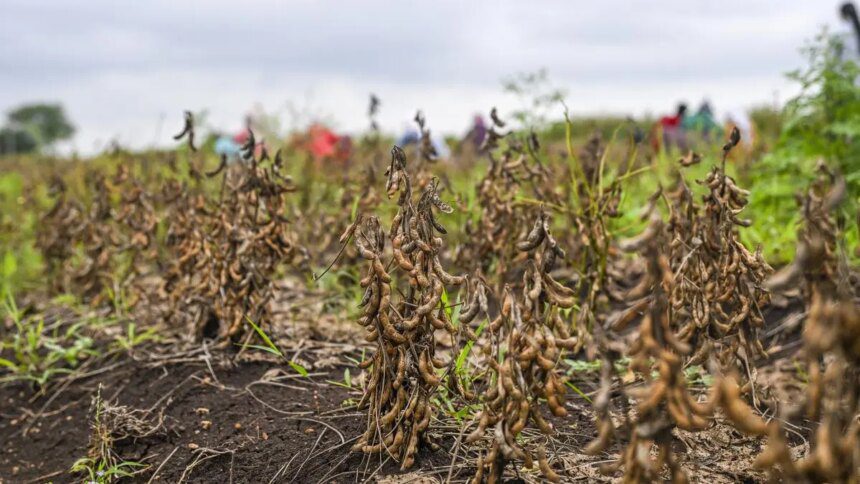India’s soybean production is projected to decline by 16% to 10.5 million tonnes for the crop year spanning July 2025 to June 2026, according to the Soybean Processors Association of India (SOPA). This figure reflects a decrease of 2.05 million tonnes compared to last year’s output of 12.58 million tonnes.
Factors contributing to this downturn include excessive rainfall and diseases such as yellow mosaic virus and aerial blight, which have adversely affected yields. Estimates indicate that the yield will decrease to 920 kg per hectare, down from 1,063 kg per hectare last year.
SOPA has estimated that the kharif 2025 soybean acreage will cover 1.145 million hectares, while the government’s estimate stands at 1.204 million hectares. These projections are derived from a survey conducted in four key soybean-producing states: Maharashtra, Madhya Pradesh, Rajasthan, and Karnataka.
The organization noted that crop conditions vary from normal to poor across major growing regions, especially in Madhya Pradesh, Maharashtra, and Rajasthan.
Grain Quality Compromised
SOPA has reported significant issues resulting from the yellow mosaic virus and aerial blight. Furthermore, ongoing excessive rainfall during the harvest season has led to crop damage, particularly in low-lying areas prone to waterlogging, which has resulted in smaller grain sizes and lower yields.
Quality of the grain has also suffered due to the impact of heavy rain and waterlogging, leading to increased moisture levels expected in the initial weeks of harvest.
In Madhya Pradesh, the area dedicated to soybean cultivation decreased by 6.4%, amounting to 336,000 hectares, bringing the total area to 486,400 hectares. Production fell by 1.084 million tonnes, or 19.57%, resulting in an output of 4.455 million tonnes compared to 5.539 million tonnes last year. The average yield has declined to 916 kg per hectare, down by 149 kg per hectare.
Maharashtra Sees Area Increase
In contrast, Maharashtra reported a 2% increase in soybean acreage to 470,900 hectares, up from 450,000 hectares the previous year. However, production in the state decreased by 6.8% to 4.674 million tonnes, while average yields fell to 992 kg per hectare, down by 123 kg per hectare. Both Maharashtra and Madhya Pradesh have experienced impacts from the yellow mosaic virus, and the grain quality has deteriorated due to excessive rainfall.
In Rajasthan, the area under soybean cultivation dropped by 18.5%, totaling 90,600 hectares, while production saw a 46% decline to 566,000 tonnes, decreased from 1.05 million tonnes the prior year. The average yield in Rajasthan fell by around 34% to 625 kg per hectare, attributed to weakened plant growth and poor crop conditions. Additional challenges stemming from the yellow mosaic virus and aerial blight further exacerbated the situation, contributing to smaller grain sizes and lower yields.
Published on: October 10, 2025










